Farmer Mazzareno Bisogni fights back tears as he stands among the remains of trees he planted 35 years ago, victims of a drought hitting “Australia’s Mississippi.”
Bisogni’s orchard lies in the heart of the once-mighty Murray-Darling river system which irrigates Australia’s food bowl, the vast southeastern corner responsible for 40 percent of agricultural output.
The eight-year “big dry,” the worst drought in a century, has devastated the region, an area covering 1.06 million square kilometers — the size of France and Spain combined.
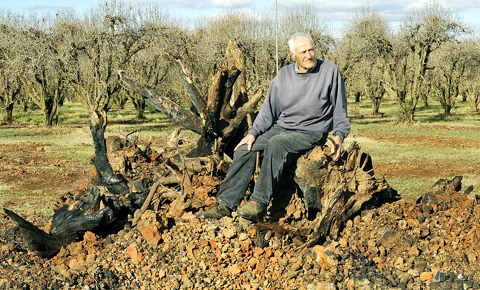
PHOTO: AFP
Lack of water this year meant the fruit on Bisogni’s apple and pear trees in Victoria state literally cooked on their branches under the furious Australian sun, making them suitable only for jam.
Rather than leave the land, like many farmers along the Murray, the tenacious 78-year-old Italian migrant scaled back his operation so he could use limited water resources to cultivate export-quality produce for Asia.
“I couldn’t sleep for nights before pulling them out, I was tossing and turning” he said, pointing to the blackened branches of dozens of trees he bulldozed and burned.
“A pear tree has 100 years life [but] I have to pull them out. It broke my heart,” he said.
Tourist brochures for the Murray-Darling say Mark Twain likened the waterway to his beloved Mississippi during a visit in the 1890s.
But the US writer would struggle to make the comparison today, particularly since the one of the river’s paddleboats, the Cumberoona, had to stop operating three years ago when water levels became too shallow.
Sections of the river have become little more than stagnant pools as the drought continues, with banks eroded into crumbling dirt cliffs that leave the roots of gum trees exposed.
For three months this year, a toxic blue-green algal bloom leeched along 800km of the Murray, prompting warnings from authorities not to swim in the river.
Water levels are so low that the freshwater lakes near the Murray’s mouth in South Australia are turning acid as soil minerals are exposed to oxygen. The lakes are now below sea-level and only man-made barriers keep the ocean out.
Official figures show the number of farmers in the Murray-Darling fell 10 percent to 67,000 between 1996 and 2006 as drought and falling prices drove them from the region.
Australian Prime Minister Kevin Rudd describes the decline of the Murray-Darling as the “most practical impact of climate change across Australia,” the world’s driest inhabited continent.
Environmentalists also blame fertilizer run-off and decades of wasteful irrigation practices, as well as short-term policies by the three state governments on the river’s route that ignore the waterway’s overall health.
Rudd’s national government has attempted to address the problem by placing the river system’s management under a centralized body, the Murray-Darling Basin Authority (MDBA).
It has also spent hundreds of millions of dollars buying out irrigators’ water allocations to try to restore the so-called “environmental flows” needed to restore the river’s health.
But locals say what they really need is rain, a commodity the authority warns is likely to be scarce for a long time to come.
This month’s MDBA drought update said river inflows remained two-thirds below their long-term average and would worsen if forecasts of a dry “El Nino” weather pattern proved correct.
“With another El Nino event predicted to bring dry conditions, the overall outlook for the 2009-to-2010 water year unfortunately remains very poor,” authority chief executive Rob Freeman said.
For Bisogni, still working his farm long past his planned retirement and forced to borrow A$2.3 million (US$1.9 million) last year to keep it operating, it amounts to a grinding struggle.
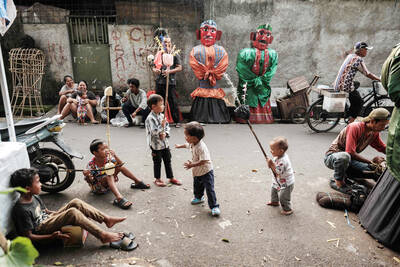
In the sweltering streets of Jakarta, buskers carry towering, hollow puppets and pass around a bucket for donations. Now, they fear becoming outlaws. City authorities said they would crack down on use of the sacred ondel-ondel puppets, which can stand as tall as a truck, and they are drafting legislation to remove what they view as a street nuisance. Performances featuring the puppets — originally used by Jakarta’s Betawi people to ward off evil spirits — would be allowed only at set events. The ban could leave many ondel-ondel buskers in Jakarta jobless. “I am confused and anxious. I fear getting raided or even
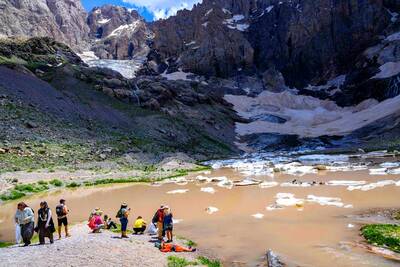
Kemal Ozdemir looked up at the bare peaks of Mount Cilo in Turkey’s Kurdish majority southeast. “There were glaciers 10 years ago,” he recalled under a cloudless sky. A mountain guide for 15 years, Ozdemir then turned toward the torrent carrying dozens of blocks of ice below a slope covered with grass and rocks — a sign of glacier loss being exacerbated by global warming. “You can see that there are quite a few pieces of glacier in the water right now ... the reason why the waterfalls flow lushly actually shows us how fast the ice is melting,” he said.
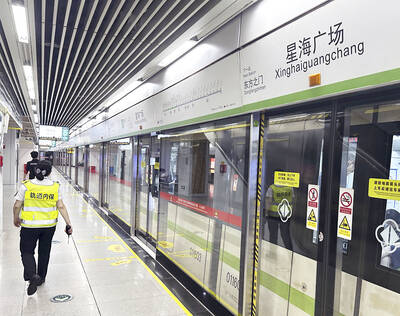
RISING RACISM: A Japanese group called on China to assure safety in the country, while the Chinese embassy in Tokyo urged action against a ‘surge in xenophobia’ A Japanese woman living in China was attacked and injured by a man in a subway station in Suzhou, China, Japanese media said, hours after two Chinese men were seriously injured in violence in Tokyo. The attacks on Thursday raised concern about xenophobic sentiment in China and Japan that have been blamed for assaults in both countries. It was the third attack involving Japanese living in China since last year. In the two previous cases in China, Chinese authorities have insisted they were isolated incidents. Japanese broadcaster NHK did not identify the woman injured in Suzhou by name, but, citing the Japanese
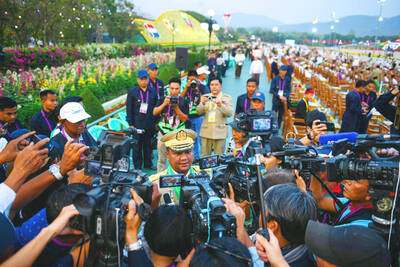
RESTRUCTURE: Myanmar’s military has ended emergency rule and announced plans for elections in December, but critics said the move aims to entrench junta control Myanmar’s military government announced on Thursday that it was ending the state of emergency declared after it seized power in 2021 and would restructure administrative bodies to prepare for the new election at the end of the year. However, the polls planned for an unspecified date in December face serious obstacles, including a civil war raging over most of the country and pledges by opponents of the military rule to derail the election because they believe it can be neither free nor fair. Under the restructuring, Myanmar’s junta chief Min Aung Hlaing is giving up two posts, but would stay at the